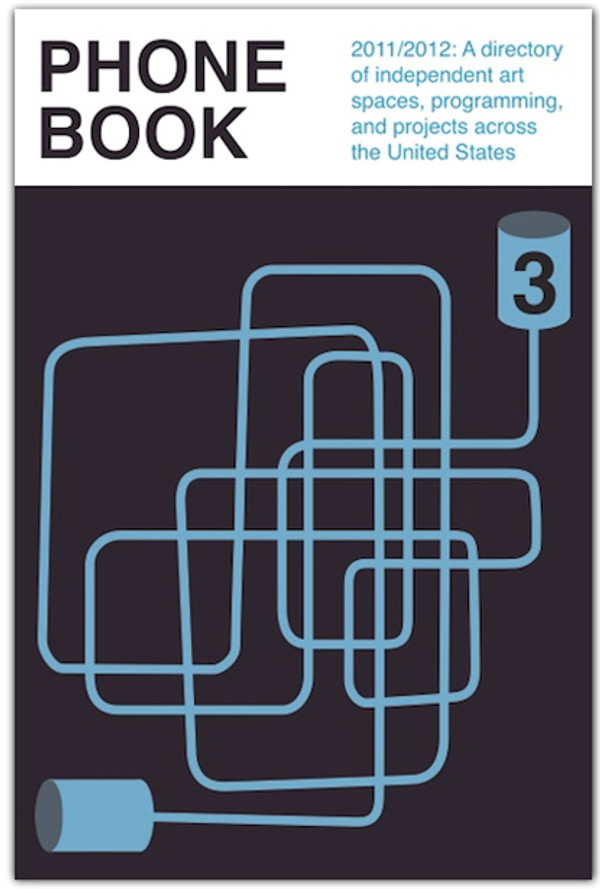
- Quick View
- Sold Out
By threewalls with essays and documents from Group Material, Renny Pritikin, Susan Sakash, FEAST Brooklyn, Ox-bow, Faheem Majed, Chances Dances, Paul Durica, Dara Greenwald, Amy Franceschini, Pilot TV, Jon Brumit and Sarah Wagner, PLAND, Andy Sturdevant, Robby Herbst and more.
Chicago:threewalls, 2011
Pages: 216
Dimensions: 7 in H X 5 in W
Cover: soft
Binding: perfect bound
Process: offset
Color: color cover with black insides
Edition size: unknown
ISBN: 978-0-615-18751-8
New - the biggest phonebook yet! Tons of useful information, good clean and clear design, and a resource you are sure to use.
"PHONEBOOK 3 is a directory of independent art spaces, programming, and projects throughout the United States and a collection of critical essays and practical information written by the people who run them. PHONEBOOK 3 includes artist-run spaces, public programming, unconventional residencies, alternative schools, and community resources; all of the projects that form and support art ecologies across the nation, as well as historical documents marking their past. Featuring essays and documents from Group Material, Renny Pritikin, Susan Sakash, FEAST Brooklyn, Ox-bow, Faheem Majed, Chances Dances, Paul Durica, Dara Greenwald, Amy Franceschini, Pilot TV, Jon Brumit and Sarah Wagner, PLAND, Andy Sturdevant, Robby Herbst and more.
With over 750 listings of artist spaces, residency programs, financial and administrative resources, and event series across the United States, this book is the essential guide to the current national landscape of artist-run culture. Including everything from nonprofit and community institutions to flexible and self-organized art spaces, PHONEBOOK 3 animates a national conversation on grassroots creative activity happening outside of traditional institutions and highlights innovative organizing models for artists, administrators and academics. PHONEBOOK 3 is a key access point to their activity and exposes their essential work to new audiences; artists across the world who want to connect with new collaborators, supporters of the arts who are looking for new outlets for cutting-edge and experimental art activity, and academics and curious thinkers who are interested in a rigorous discussion of the theoretical and pragmatic issues facing both non-profits and self-organized artist-led activities.
The directory organizes art spaces into four categories depending upon the primary tools they provided to artists and their community including SPACE to show art, TIME to present performances, a PLACE for artists to stay and make work, and RESOURCES in the form of physical materials or research archives. Each section of the book includes commissioned essays by creative arts administrators and organizers providing individualized accounts of innovative and relevant strategies to keeping projects afloat and sharing practical skills and personal reflections. Also interspersed throughout are historical documents from art spaces and residency programs that have shaped and expanded the definition and function of independent and alternative art spaces in the United States over the last 100 years.
